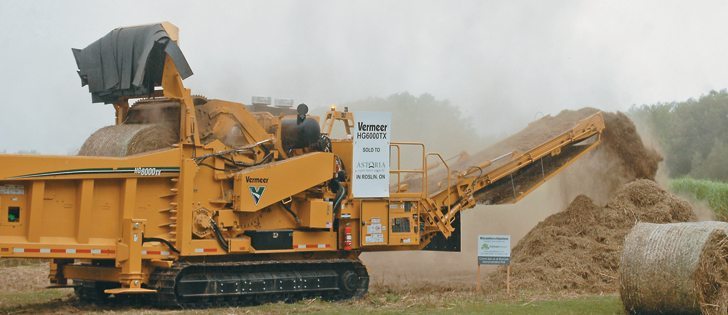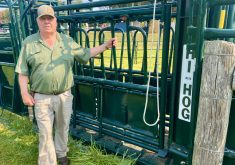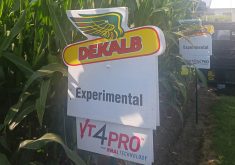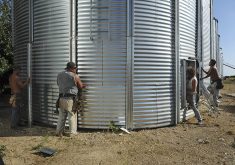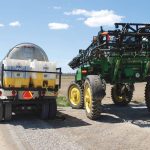Choppers, grinders, mowers | Manufacturers introduce equipment to handle feedstock for use in ethanol plants, compost or livestock bedding
WOODSTOCK, Ont. — Farm equipment manufacturers have been beefing up their equipment to handle biomass.
“This baler is well suited to the toughness of this material,” Glen Farris of Agco said while pointing to a Massey Ferguson 2270XD on display at Canada’s Outdoor Farm Show in Woodstock Sept. 10.
The machine, built in Hesston, Kansas, is worth about $170,000. It was baling stover, the primary feedstock to be used at three new generation ethanol plants in the U.S. Midwest.
“The first of three projects opened last week, the Poet-DSM cellulosic corn stover plant at Emmetsburg, Iowa,” Farris said.
The facility is expected to produce 20 million gallons annually.
Dupont’s 30 million gallon facility at Nevada, Iowa, is near completion, and the Spanish company Abengoa expects to be in production by year’s end at Hugonton, Kansas.
Close to a million tonnes a year of biomass will be required at the facilities, according to company website.
Farris said a two-stage conversion is involved, and C5 and C6 sugars produced from the biomass are subsequently converted into ethanol.
Read Also

Fusarium head blight mycotoxin detector in the works
A PhD student at the University of Saskatchewan has been working on developing a method of detecting fusarium damaged kernels to ease the struggles of producers, agronomists and industry.
The removal of corn stover has been questioned from an agronomic perspective, but Farris said the practice appears to be sustainable if managed properly.
Today’s higher corn yields produce more than enough biomass to maintain soil organic matter levels, he added.
“What research has shown is when you (remove) some stover (from the field) maybe up to 50 percent, you get earlier warming in the spring, better water retention, greater microbial action and five to 10 percent more yield … but none of these studies say you should take it all.”
Farris said Agco controls close to 60 percent of the large square bale business in North America. Last year, its Massey 2270XD machines churned out about a million bales of stover.
The demonstration at the farm show also included a pass with a Hinniker flail chopper and bale handling with a Stinger 6500 bale mover.
According to the company website, the Stinger 6500 is the world’s fastest, self-propelled bale wagon. There are now four in Ontario.
The truck-like machine picks up either round or square bales of different sizes, hoisting them above the cab to the carrying rack. Up to eight, four-by-four bales can be conveyed at a time or a larger number of smaller bales.
Once loaded, the bales can be stacked using a hydraulically powered device at the back of the machine.
Vermeer Canada was also at the show with its MC3300 mower, 505 Pro Baler and HG600TX Horizontal Grinder.
The grinder, designed for the lumber industry, was the most expensive piece of equipment at $800,000. It processed two big round bales of miscanthus in a few minutes.
“If it was dry we can do about a bale a minute,” Vemeer representative Garry Moffet said.
The machine is equipped with a 650 horsepower, six-cylinder Caterpillar engine along with screens for sizing.
Rob Haimes, another Vermeer rep, said consistent sizing is important, whether the biomass is used for mushroom compost, digestion, combustion or animal bedding.
Craig Drury, vice-president of operations in Eastern Canada, said that Vermeer is interested biomass, but it’s an immature market in Ontario at this point.

